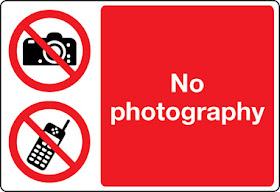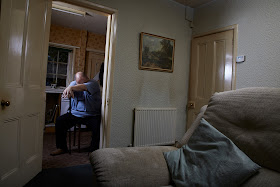I have been asked by the National Portrait Gallery London for an extended caption that might bring some insights in the creation of 'Grayson Perry, Starr Auditorium, Tate Modern, 2013' for the upcoming exhibition at Chelmsford Museum, Spring 2020.
Submitted Draft
'It would not be original to describe the Starr Auditorium at Tate Modern as ‘womb-like’, the deep red envelopes you and like a foetus I was looking for the exit when I found this corner. It challenges reality just enough for it to lend a hand in examining this unique and complex subject. This portrait is a record of the first time I met Grayson Perry.
I consider my most successful portraits to be when I am able to document the literal first meeting with my subjects, they are invited in front of the lens without any conventional niceties and often in silence. In a portrait of the famous the resulting awkwardness and vulnerability can feel like iconoclasm but not in a negative sense, I am accidentally de-constructing the myths of celebrity because my main interest is in examining the human condition it masks. I enjoy photographing artists but there is a particular challenge in photographing Grayson Perry, who can present an alternative, equally valid persona ‘Claire’. Claire’s appearance is so radical as to parody the very notion of persona and in this first opportunity to represent her I was determined not to be seduced by the vivid character that protects him. Her otherwise infectious demeanour was met by a deliberate ambivalence that inspired this briefest glimpse that now represents the serious and powerful figure of the contemporary art world, influencer and commentator on the British national character…in a dress.
Perry has spoken to me since about the experience of being the subject of a photograph as ‘observing the photographer with equal fascination’ and this has remained with me since as the closest thing I can share about what he is like. It is the very definition of empathy, to step out of one’s ego in the true exploration of the reality of another person's life. Perry is the poster girl for an empathy with a more complex idea of what Britishness is, it is closer to a lot of people’s reality, not in any narrow definition of gender or sexuality, but existentially. This is his most generous aspect, like any artist the extremes of vulnerability and ego exist within him but he allows us to form our own relationship to him, projecting our own thoughts and feelings onto Claire and she loves the attention.'













